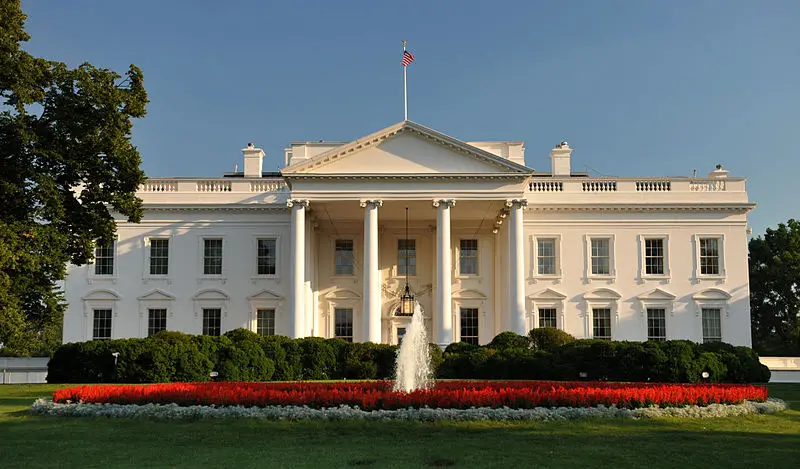On February 3, a startling security breach occurred outside the White House, culminating in the arrest of a man who scaled an outer fence on the South Grounds. The incident, which took place at approximately 4:20 p.m., has raised fresh questions about the robustness of security at one of the most iconic and well-guarded locations in the United States.
The Incident Unfolds
The entire episode was captured on video by witness David Stanley, whose post on X (formerly Twitter) quickly went viral. In the video, Stanley can be heard describing the moment when the suspect approached him. “He passed me, yelled, ‘F*** it,’ and then started to scale the fence,” Stanley recounted. The raw footage not only documented the man’s brazen attempt to breach the perimeter but also showed the rapid response by Secret Service agents, who swiftly moved in to take him into custody.
At the time of the incident, the South Grounds of the White House were bustling with activity as the site continued to operate under the watchful eyes of the nation’s top security team. Witnesses reported seeing rooftop snipers “scurrying around” and K9 units racing across the expansive 18-acre complex, reinforcing the image of a security apparatus always on high alert.
Immediate Response and Arrest
The U.S. Secret Service is tasked with protecting the White House and ensuring the safety of the President, as well as other key government officials. The agency’s rapid response to the fence-climbing incident underscores the seriousness with which breaches are treated. Within moments of the suspect’s attempt, uniformed officers and special agents arrived on the scene. According to witness reports, their arrival was marked by a flurry of coordinated activity—a display of the cutting-edge security measures that have long defined White House protection.
The suspect, whose identity has not yet been made public, was quickly subdued and taken into custody. At this stage, it remains unclear whether charges will be filed, as the Secret Service is still reviewing the incident in detail. As per established protocol, a thorough investigation is underway to determine the motive behind the breach and to assess any potential weaknesses in the current security measures.
Reviewing the Security Protocol
The White House is one of the most secure buildings in the world, guarded by a myriad of advanced technologies and an experienced cadre of Secret Service agents. The 18-acre complex is designed with multiple layers of defense, including physical barriers, surveillance systems, and rapid response teams. However, this incident has once again drawn attention to the challenges of maintaining impenetrable security around such a high-profile target.
Following the arrest, the Secret Service confirmed that its protective operations and response to the breach would be reviewed as part of an internal investigation. “We take every security incident very seriously,” a spokesperson stated. “Our protocols will be examined in light of this event to ensure that we are continuously improving our protective measures.”
The review comes at a time when the agency has faced previous criticisms. Notably, an independent panel had highlighted “deep flaws” in Secret Service operations following an attack at a Trump campaign rally in Butler, Pennsylvania, during the previous election cycle. Incidents like these remind the nation that even the most robust security systems are not infallible and must be regularly reassessed to counter emerging threats.
The Larger Context: Challenges in National Security
This recent breach is part of a broader trend of security challenges that have periodically rocked even the most fortified government sites. While the White House remains a symbol of American resilience and power, it is also a magnet for those who seek to test the limits of security protocols. Over the years, there have been several attempts—some daring, others downright brazen—to breach the perimeters of the White House. Each attempt serves as a stark reminder of the evolving nature of security threats and the need for constant vigilance.
In the modern era, with the rapid advancement of technology and the increasingly sophisticated methods employed by those who wish to disrupt or undermine government operations, maintaining the highest level of security has become a never-ending challenge. The Secret Service, tasked with protecting the President and the nation’s most important symbols, is continually adapting its strategies and technology to address these risks. The recent fence-climbing incident, while contained quickly, adds to the ongoing dialogue about how best to safeguard critical government infrastructure.
Public Reaction and Media Coverage
News of the arrest spread quickly, and reactions on social media were swift and varied. Many users expressed relief that the breach was promptly handled, praising the Secret Service for its rapid response. One user on X commented, “The speed at which the agents moved was impressive—proof that the White House is still one of the most secure places on Earth.” Others, however, questioned whether the incident pointed to potential vulnerabilities that needed to be addressed, calling for a transparent review of security protocols.
Media outlets have also weighed in on the incident. Several news agencies have underscored the fact that while the breach was quickly contained, it highlights the ongoing cat-and-mouse game between security forces and those seeking to exploit potential weaknesses. Analysts have noted that in today’s complex security landscape, even minor breaches can have significant symbolic implications, reinforcing the need for constant improvement in protective measures.
Implications for Future Security Measures
The arrest of the suspect has already prompted discussions about potential enhancements to White House security. Some experts suggest that the incident could lead to an increase in surveillance and the deployment of additional physical barriers around sensitive areas. Others advocate for more advanced technology, such as improved motion sensors and artificial intelligence-driven monitoring systems, to detect and deter unauthorized access attempts more effectively.
Moreover, the incident may also serve as a case study for training purposes within the Secret Service. By analyzing the suspect’s behavior and the response of security personnel, the agency can refine its protocols and better prepare for future breaches. This proactive approach is essential for adapting to an ever-changing threat landscape and ensuring that the highest standards of security are maintained at all times.
Broader Security Concerns in the U.S.
While this particular incident occurred at the White House, it is part of a wider pattern of security challenges across the United States. From threats against major landmarks to breaches at government buildings and public events, the need for robust and adaptive security measures is more critical than ever. Federal authorities are increasingly aware that as technology advances, so too do the methods employed by those with nefarious intentions.
The balance between maintaining openness—an essential quality of a democratic society—and ensuring the safety of public figures and infrastructure is a delicate one. Incidents like this one serve as reminders that even the most secure locations require constant vigilance and periodic reassessment of their protective measures.
Moving Forward: The Ongoing Investigation
As the Secret Service continues its investigation, several key questions remain unanswered. What motivated the suspect to attempt such a brazen act? Was this an isolated incident or part of a broader plan to exploit vulnerabilities in the White House security perimeter? And perhaps most importantly, what steps will be taken to prevent a recurrence?
While authorities have yet to disclose the identity of the suspect or the exact charges he may face, the ongoing investigation is expected to yield further insights in the coming weeks. The findings will likely inform future security protocols, ensuring that any weaknesses are swiftly addressed. For now, the focus remains on learning from this incident and bolstering the defenses of one of America’s most critical institutions.
Conclusion: A Call for Vigilance in an Evolving Threat Landscape
The arrest of a man for scaling the outer fence of the White House’s South Grounds is a stark reminder that no security system is completely impervious. While the rapid response of the U.S. Secret Service prevented what could have been a much larger breach, the incident underscores the need for continual reassessment and enhancement of security measures in an era of ever-evolving threats.
In the days ahead, as federal authorities review the incident and implement new protocols, this event will serve as a valuable lesson in the ongoing quest to protect our nation’s most important symbols. The delicate balance between accessibility and security must be maintained, ensuring that while the White House remains a beacon of democratic openness, it is also fortified against those who seek to undermine it.
As we reflect on this incident, let us remember that the safety of our national landmarks is a collective responsibility. The vigilance of our security forces and the ongoing improvements in our protective measures are essential in safeguarding the heart of our democracy. The arrest at the White House, while concerning, also highlights the strengths of our security apparatus—a system that, despite its challenges, continues to adapt and protect us in a constantly changing world.

